Petermann Bédat and their Dead-Beat Seconds Calibre 171 Watch
Focus on young and talented indie watchmakers and their first (impressive) watch.
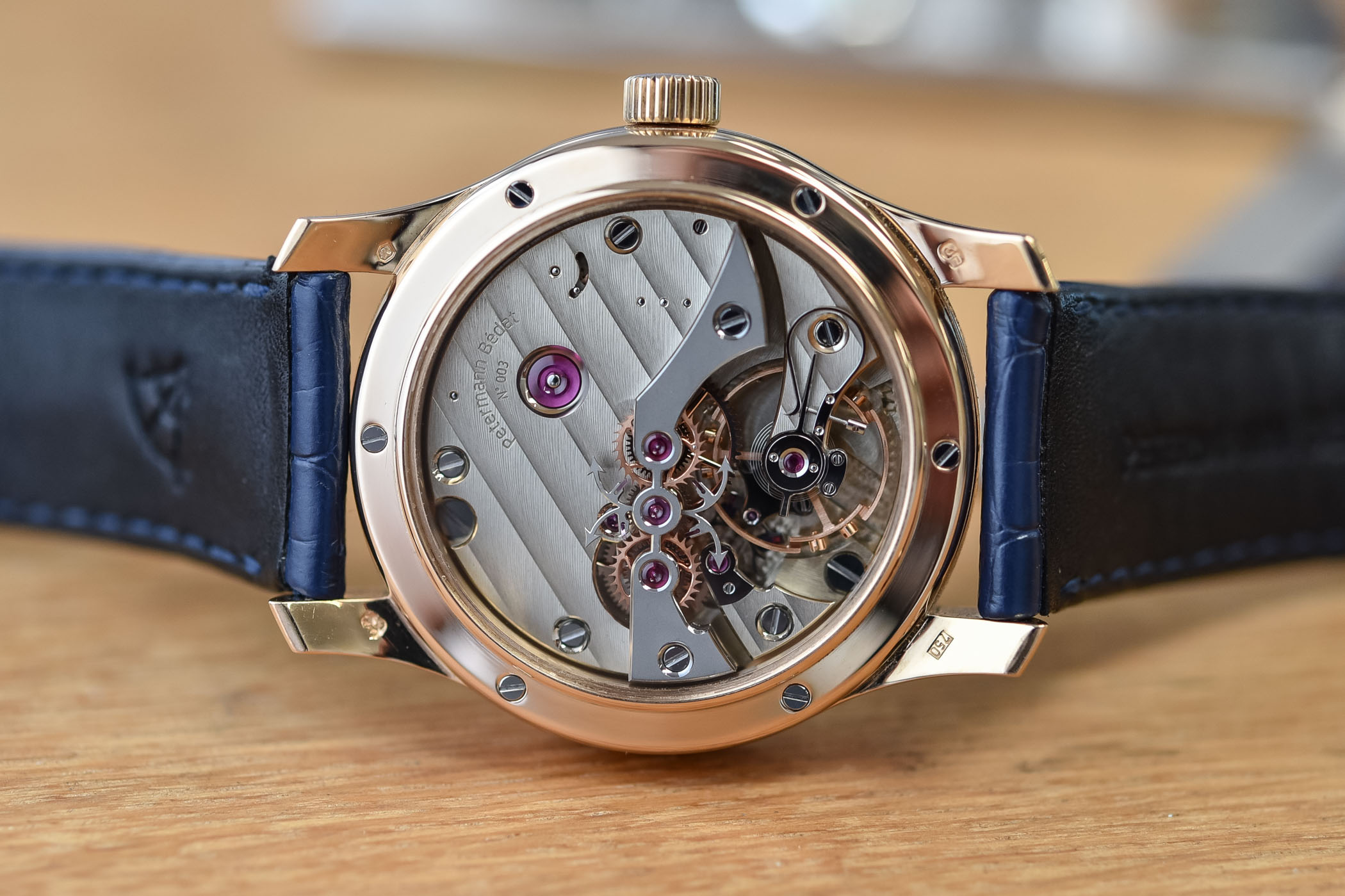
Combining associates’ names to create a watch brand is something of a tradition in the watch industry. Illustrious examples include Patek Philippe, Vacheron Constantin, Audemars Piguet or more recently Greubel Forsey. Gaël Petermann and Florian Bédat are not yet part of the Swiss Haute Horlogerie clique, but the work of these young watchmaking talents truly deserves a closer look… Which will give today, with their first (and quite stunning) creation, the Dead-Beat Seconds Calibre 171 watch.
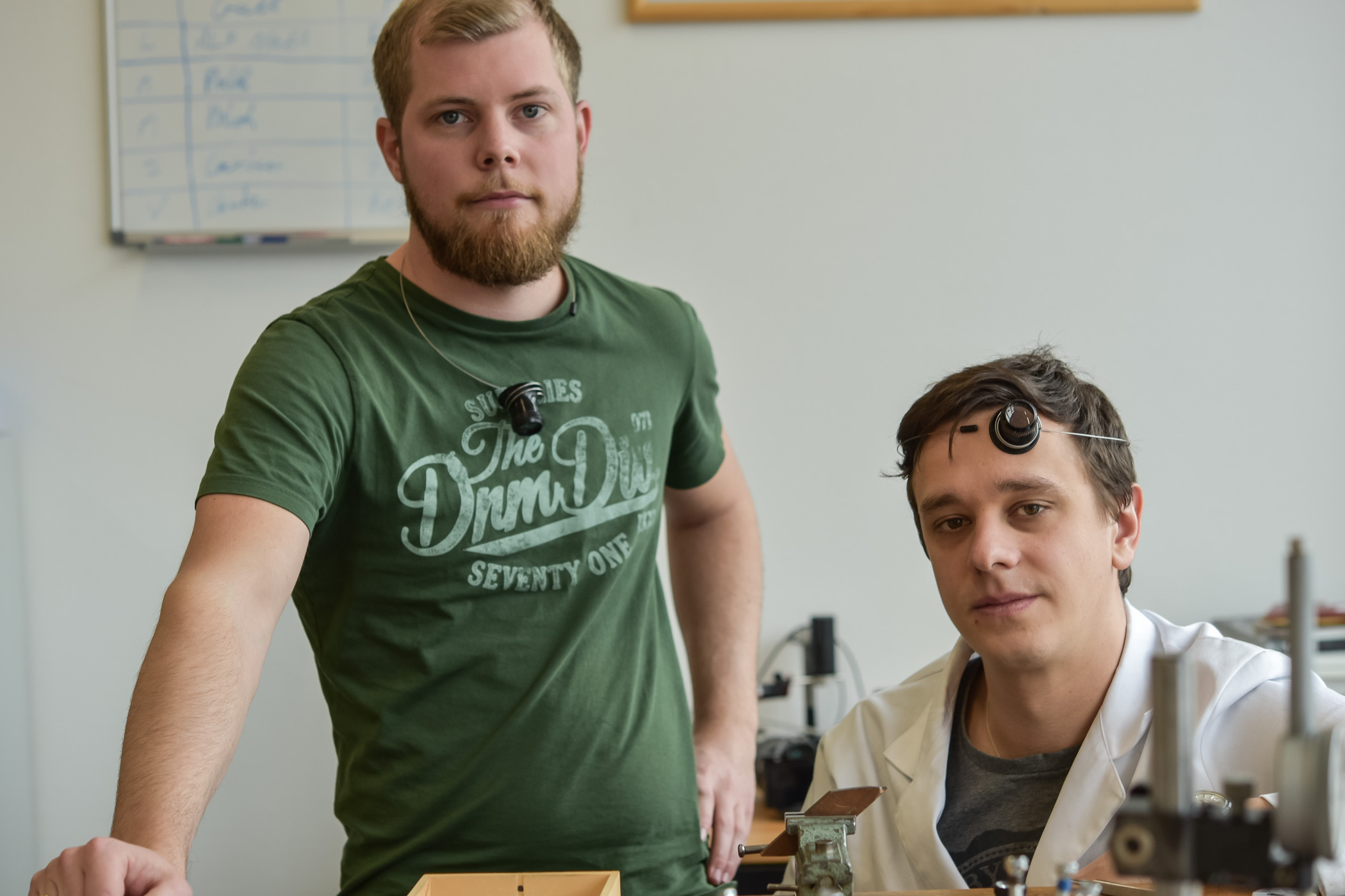
Now in their late 20s, Gaël Petermann and Florian Bédat met at the Watchmaking School of Geneva. At the time, the two friends never thought they would be launching their own brand together some 10 years later. Upon graduation, Gaël ended up working at A. Lange & Söhne and Florian at Harry Winston. Florian decided to join Gaël in Germany and they shared an apartment in Glashütte. After three years, Gaël returned to Switzerland to join the Sven Andersen team.
After Florian’s return to Switzerland, the duo decided to put together a workshop, primarily as restorers. Their atelier, located next to Dominique Renaud’s workshop in Renens, near Lausanne, handles commissions from collectors and regular restoration work from Christie’s. Eventually, Renaud asked Florian and Gaël to undertake decoration work on some of his creations and in return helped them create their first watch and movement, a dead-beat second.
Dominique Renaud
A veteran of the Swiss watch industry, Dominique Renaud is known as one of the founders of Renaud & Papi (now Audemars Piguet Renaud Papi – APRP) together with Giulio Papi in 1980. Beyond their work for Audemars Piguet, APRP is one of the most prominent players in the development and manufacturing of complicated movements: tourbillons, chronographs with tourbillon, minute repeaters and other marvels for some of the most prestigious brands. Renaud left the company in 2000 but returned a few years ago with the presentation of the DR01, a concept integrating a novel escapement and oscillator.
Unlike traditional watches in which the seconds hand sweeps in increments of a second, dead-beat seconds watches (or seconde morte in French) mark the seconds with discrete jumps, once per second. Just like a pendulum clock (and quartz watches), the decisive one-second beat provides a more legible and precise reading of the time. If this sounds simple, designing and manufacturing such a mechanism is actually a challenge – in the context of a mechanical watch. We’ve covered this specific topic here, in a technical article. Not so many watches on the market are equipped with this function (think Grönefeld, Habring² or A. Lange & Söhne).
With their background in restoration, Petermann and Bédat are watchmakers in the purest sense of the word, meaning they have the ability to craft their watches from scratch to finish (even if they do use CNC to manufacture parts). The manufacturing of their dead-beat seconds Calibre 171 involves extensive handwork, for the finishings and assembly. All in all, 340 hours are necessary to craft a single watch.
To design the mechanism, they drew inspiration from a school watch by Robert Gafner from La Chaux-de-Fonds – a pocket watch with tourbillon and seconde morte. It was developed with Dominique Renaud. The movement combines an old Valjoux calibre and a hairspring from Precision Engineering. The large balance wheel is a slow-beater operating at 18,000 vibrations per hour. The power reserve is of 36 hours. The dead-beat seconds mechanism itself is driven by the second wheel. A train of wheels works in conjunction with a four-jewel anchor that stops and releases the spring-loaded dead-beat seconds wheel precisely every second.
As illustrated below, the dead-beat second wheel train is driven by the second wheel. All wheels at the lower level rotate at the same speed. The first dead-second ratchet wheel (upper level) is integral with the lower wheel, while the second is spring-loaded. The arrow-shaped, dead-beat anchor stops and releases the latter every second.
Visible through the exhibition caseback of the watch, the hand-wound calibre 171 is simply superb. From their time with A. Lange & Söhne, the two men behind Petermann Bédat developed a true sense of respect for Saxon watchmaking. This is evident with the large barrel bridge (reminiscent of a three-quarter plate), the cock with a swan-neck regulator or the use of untreated German silver, a.k.a maillechort.
The movement is superbly decorated with Geneva stripes and inward bevelling creating beautiful contrasts. Most of the steel parts are meticulously black-mirror polished. The matte dead-beat seconds bridge is simply stunning and the motion of the mechanism (in particular its arrow-shaped, dead-second anchor) truly captivating…
This superb movement is housed in an elegant gold round case made by hand. It has curved elongated lugs that combined with the narrow bezel give this 39mm case great character on the wrist. The model we had for this hands-on session is fit with a sandblasted blue dial with applied Roman numerals and faceted indexes. The centre part is slightly recessed to create additional volume.
The Petermann Bédat Dead-Beat Seconds comes on an alligator leather strap with a gold pin buckle. Price is set at CHF 60,000. For more information, please visit www.petermann-bedat.ch or contact [email protected] And in case you attend Baselworld 2020, I thoroughly recommend that you visit Petermann Bédat to go hands-on with their watch – which will be presented in a new version.

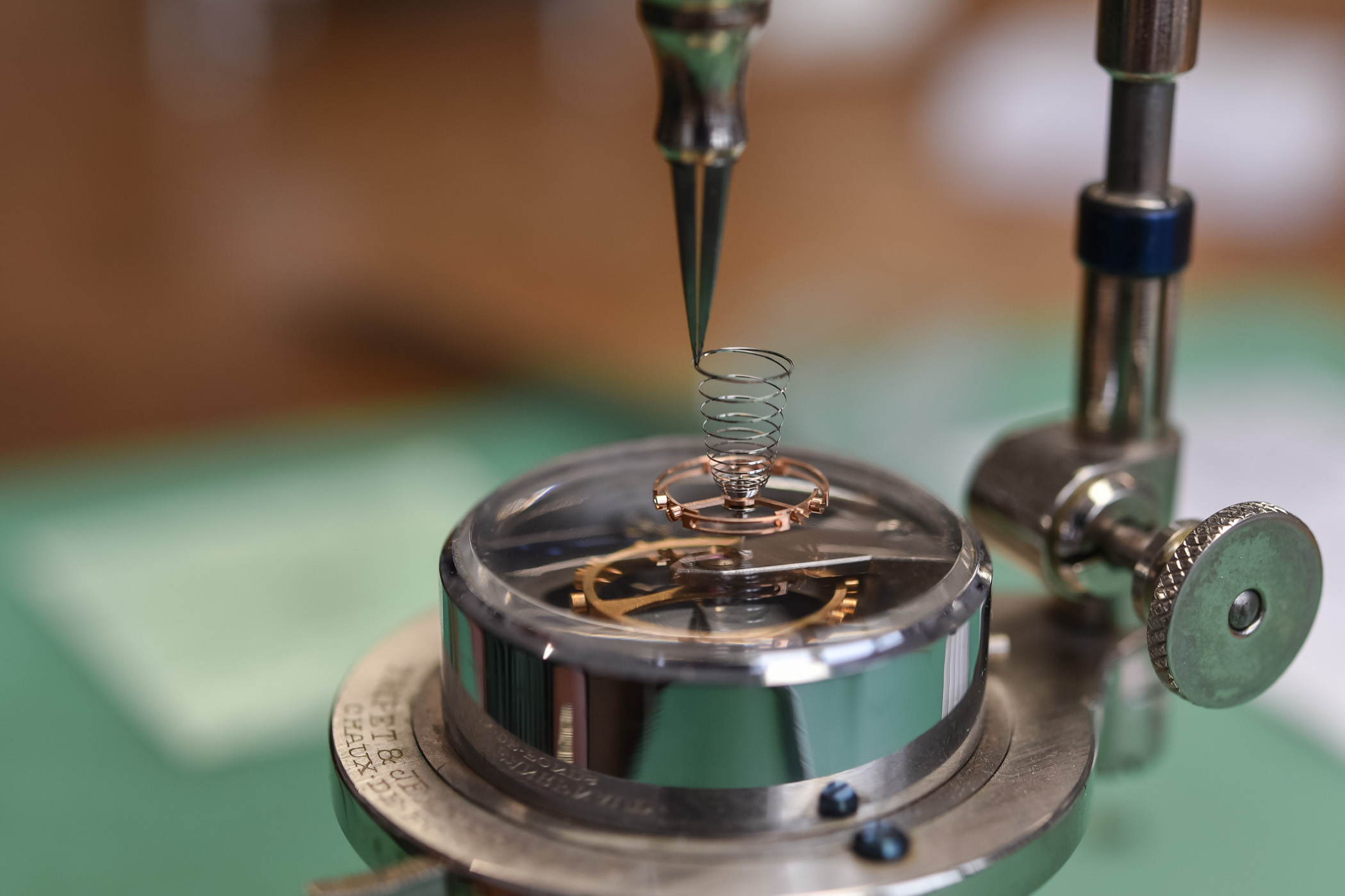
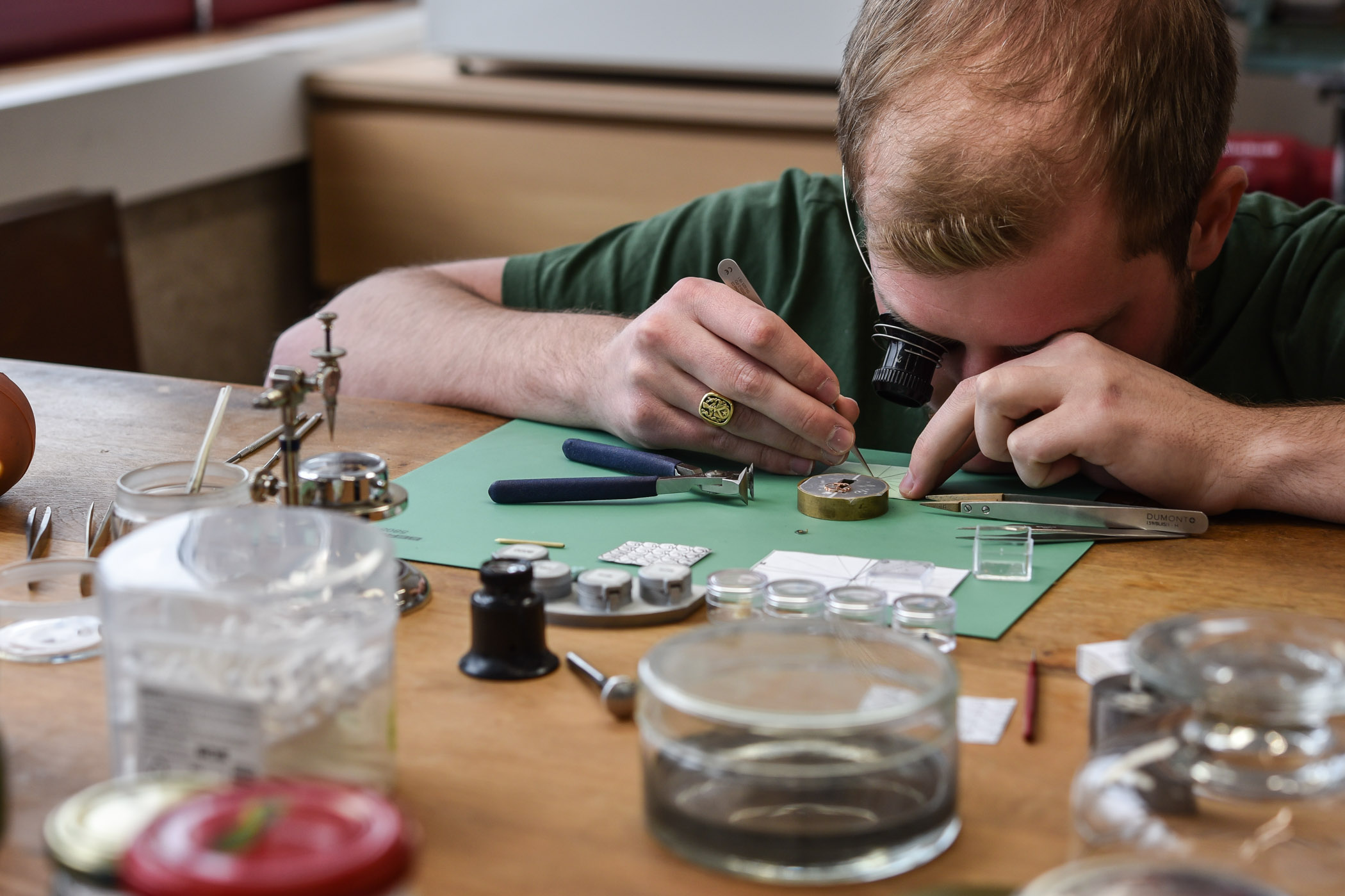

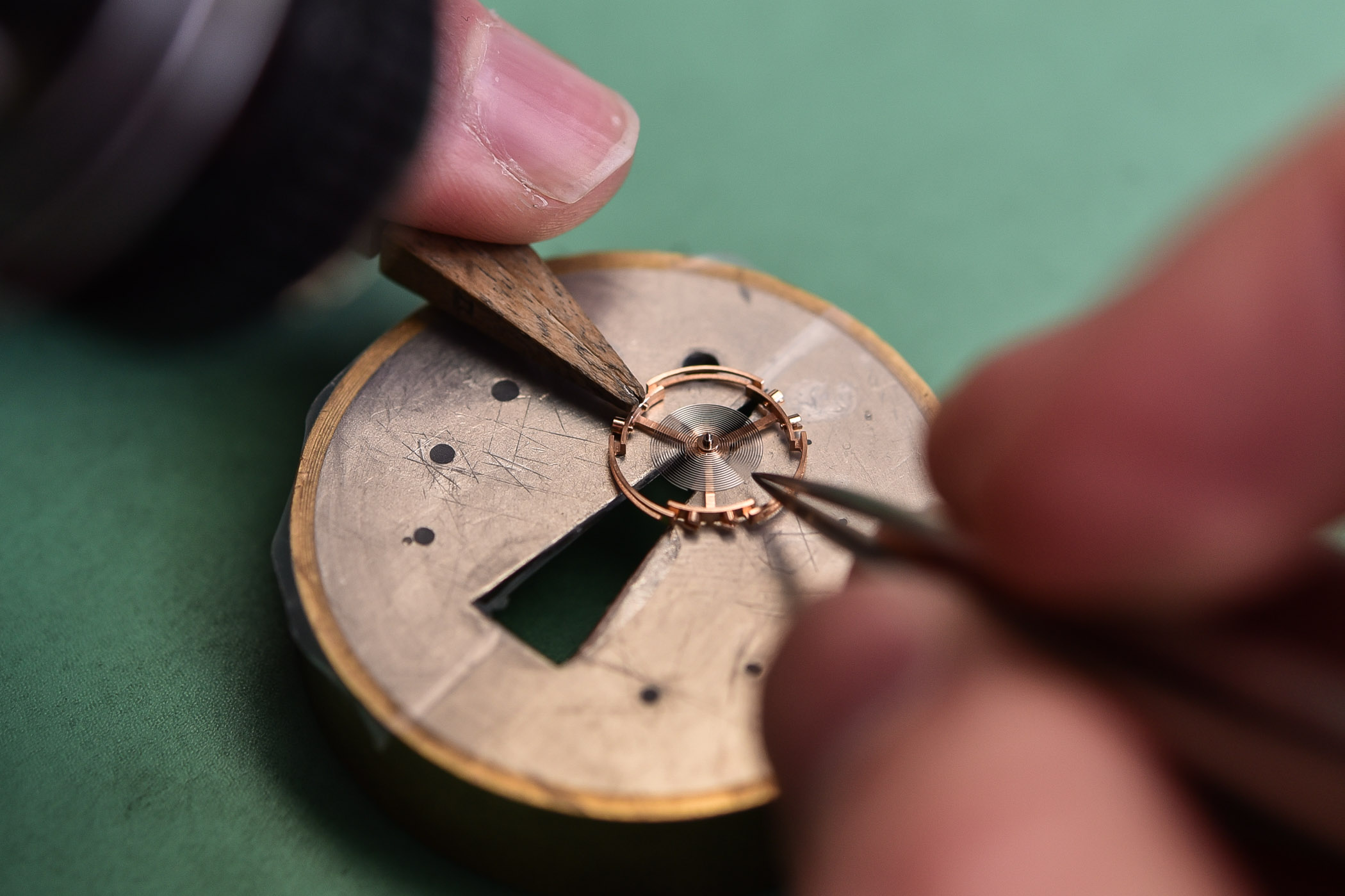

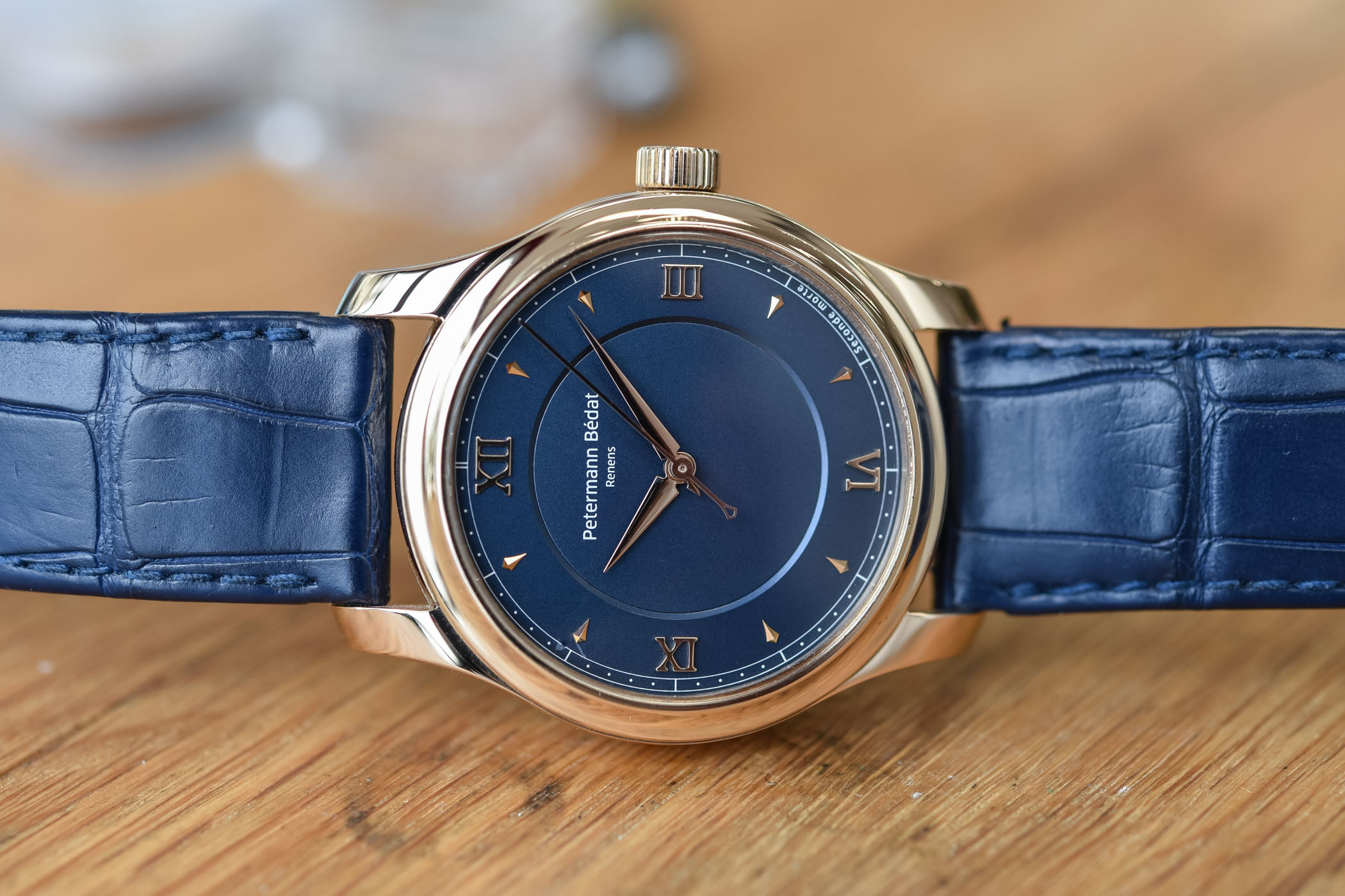
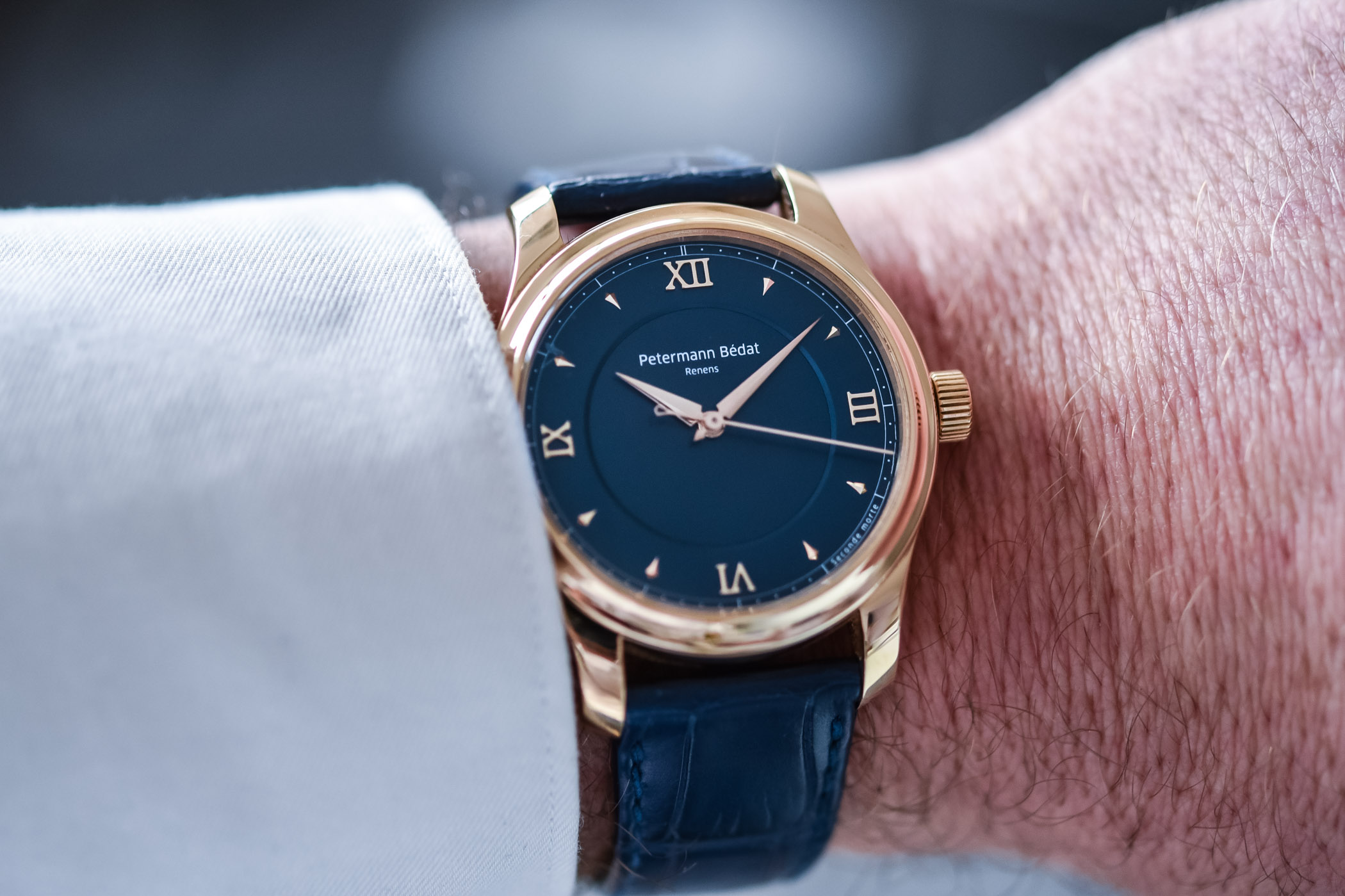
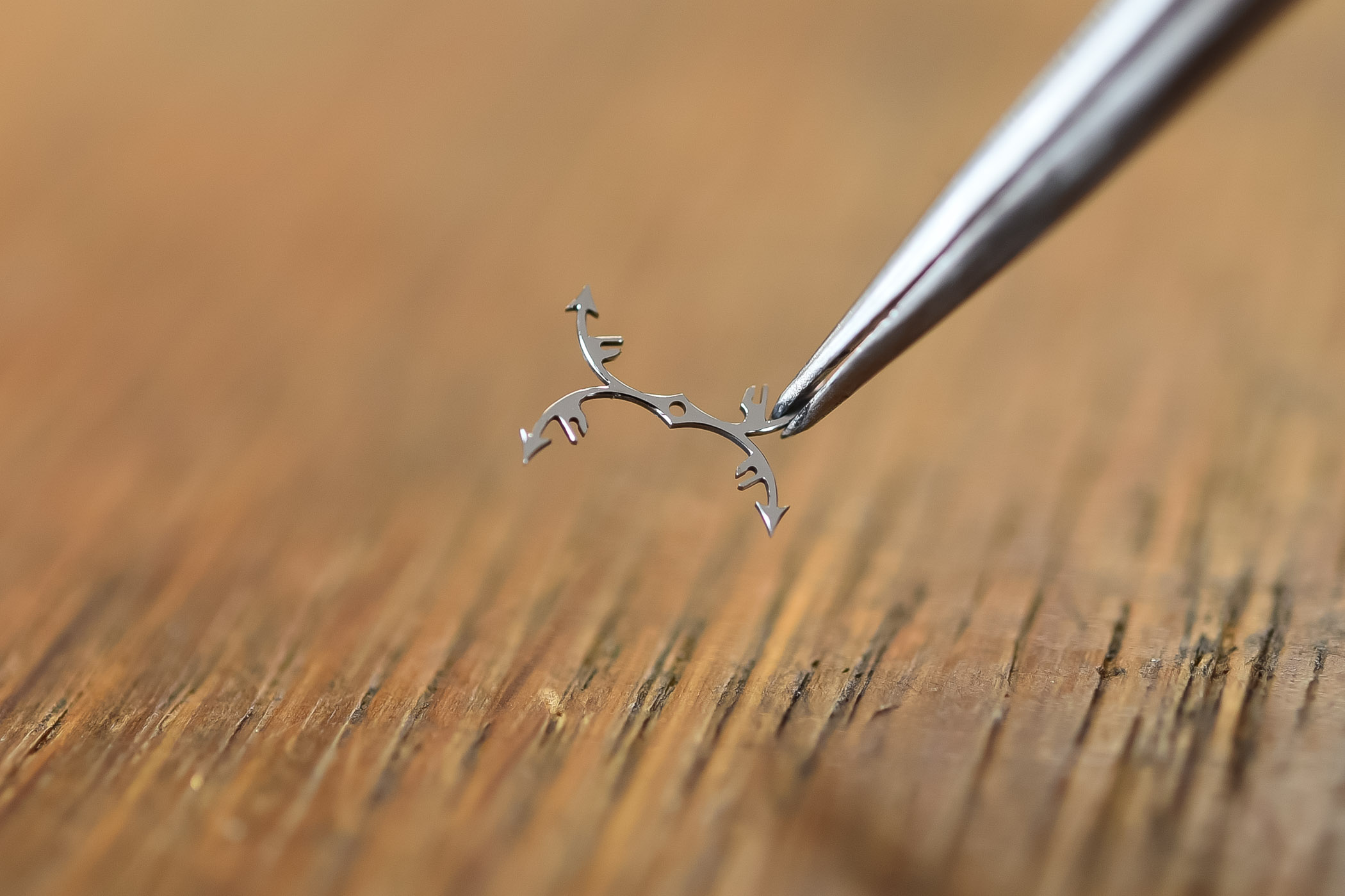
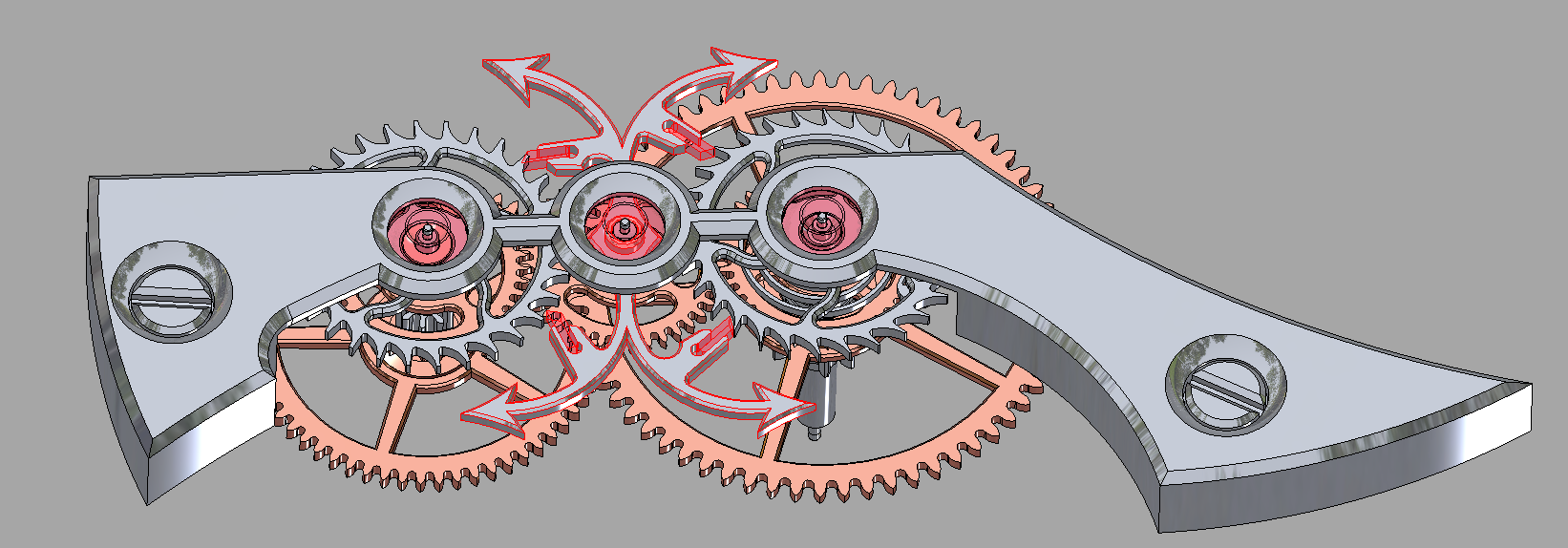
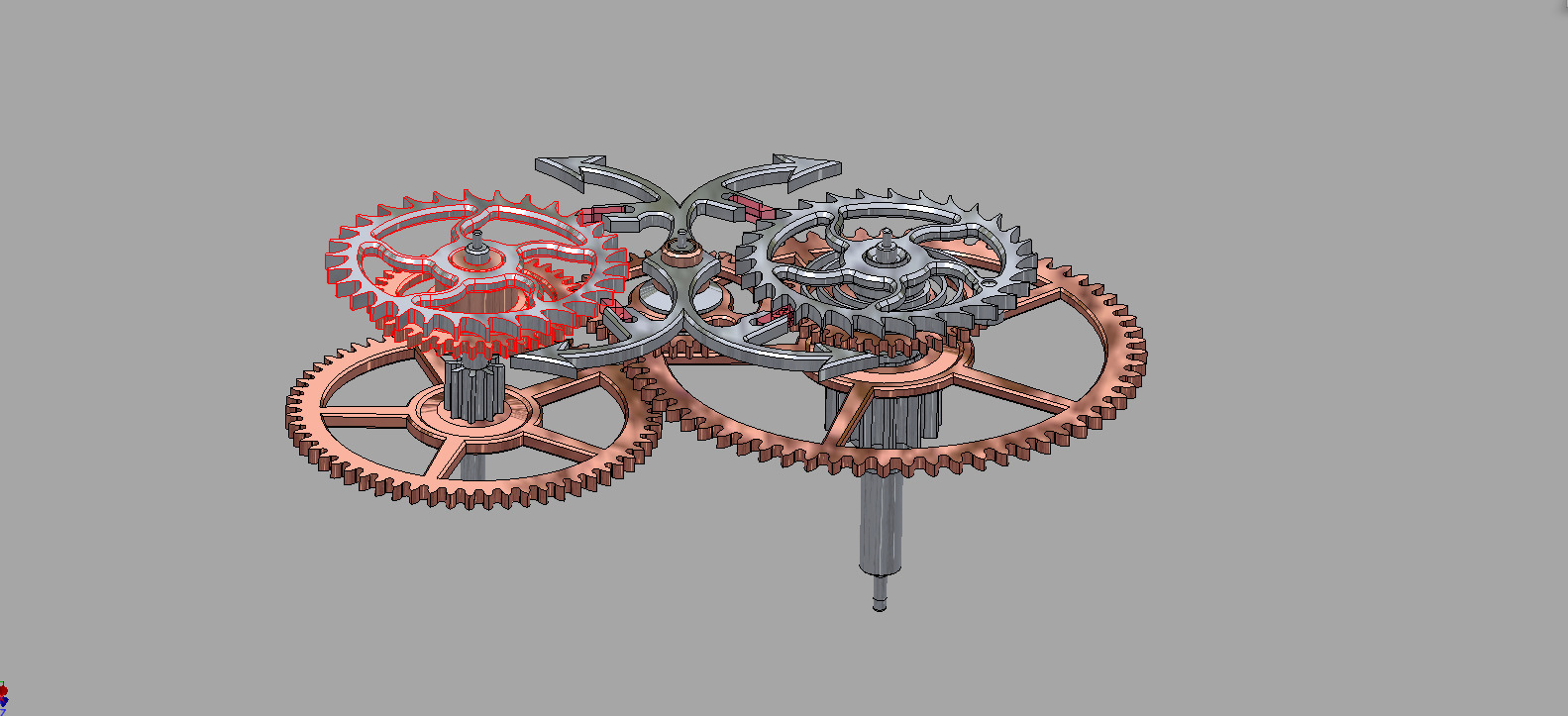

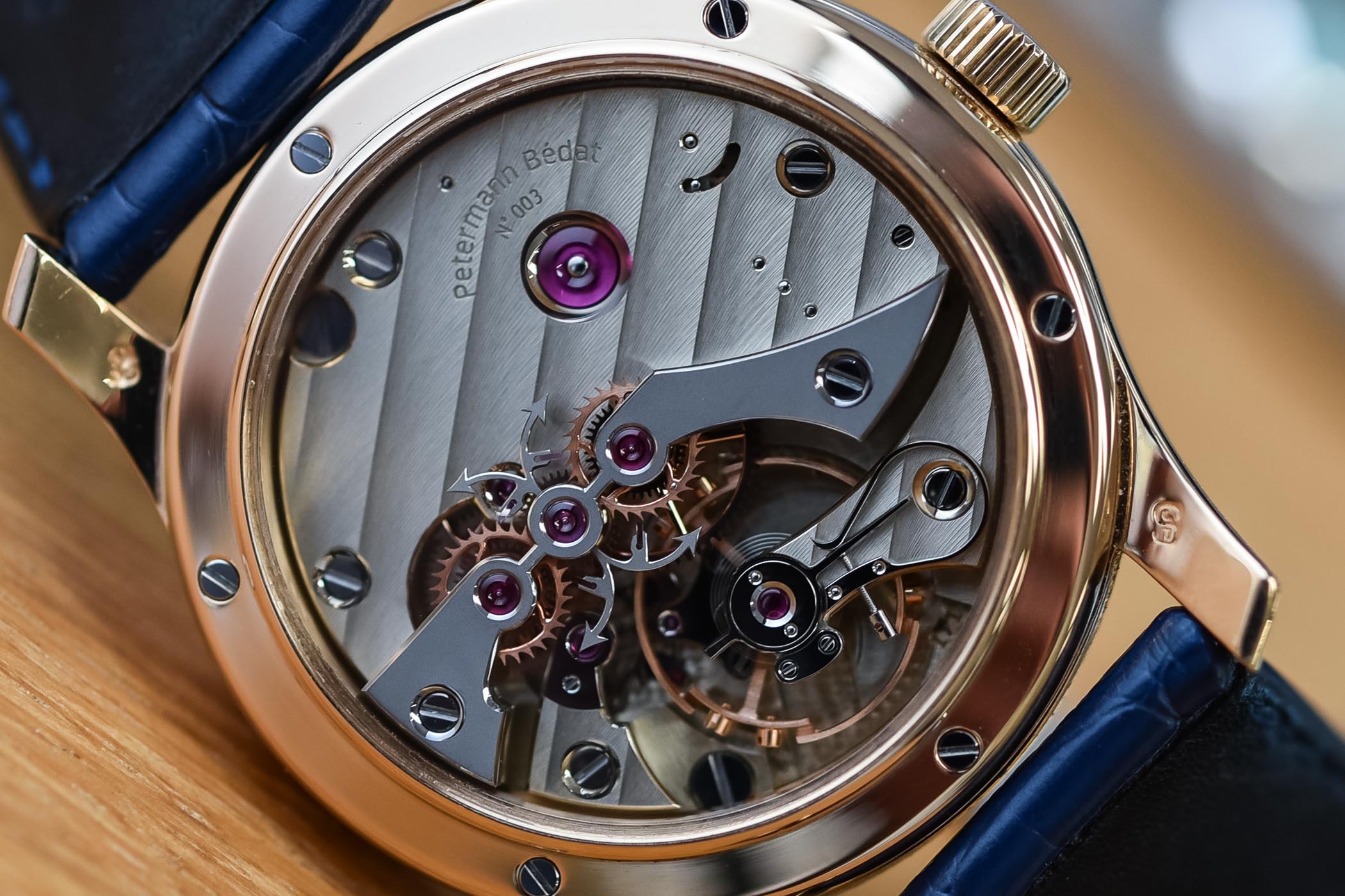
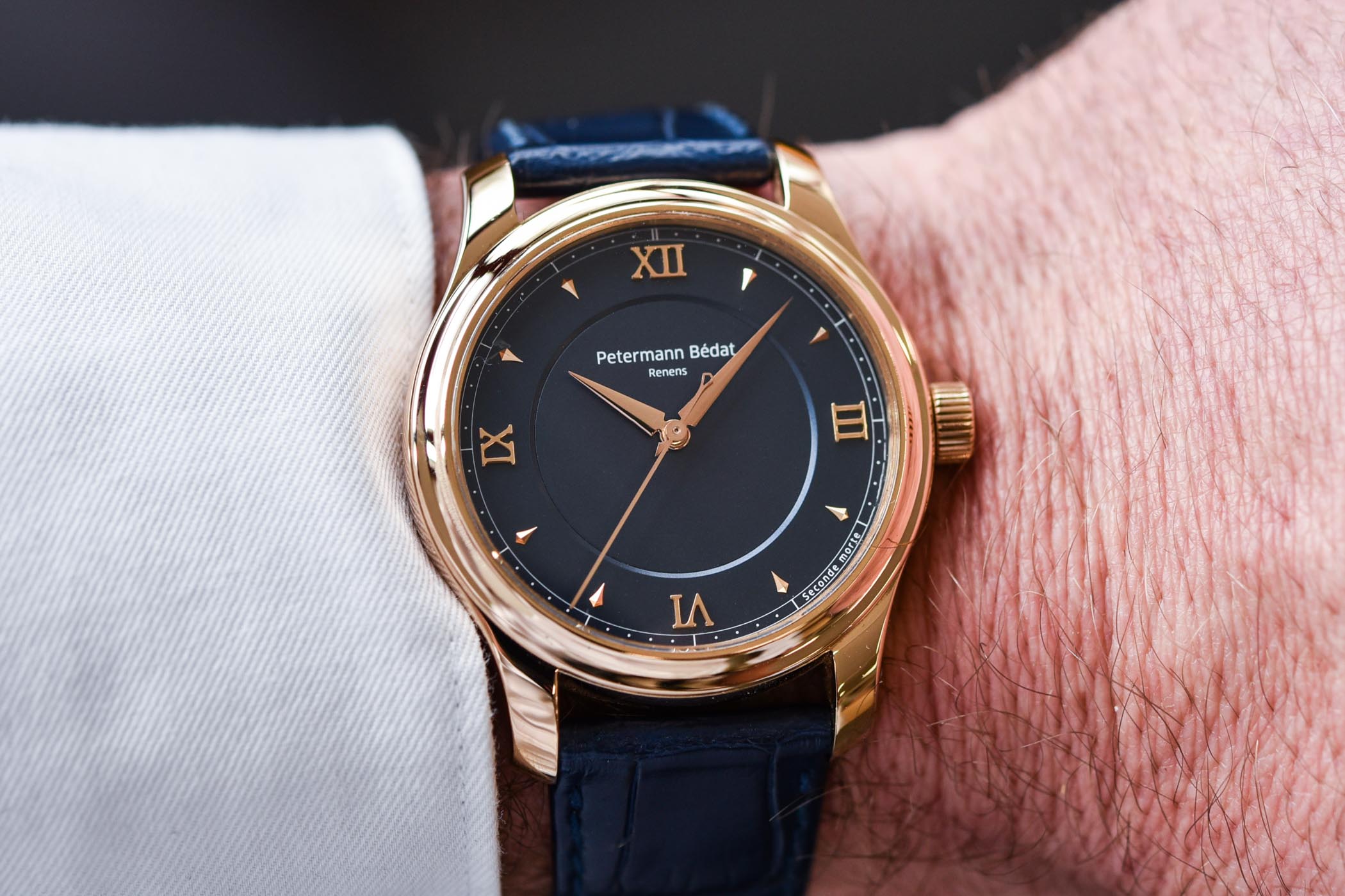
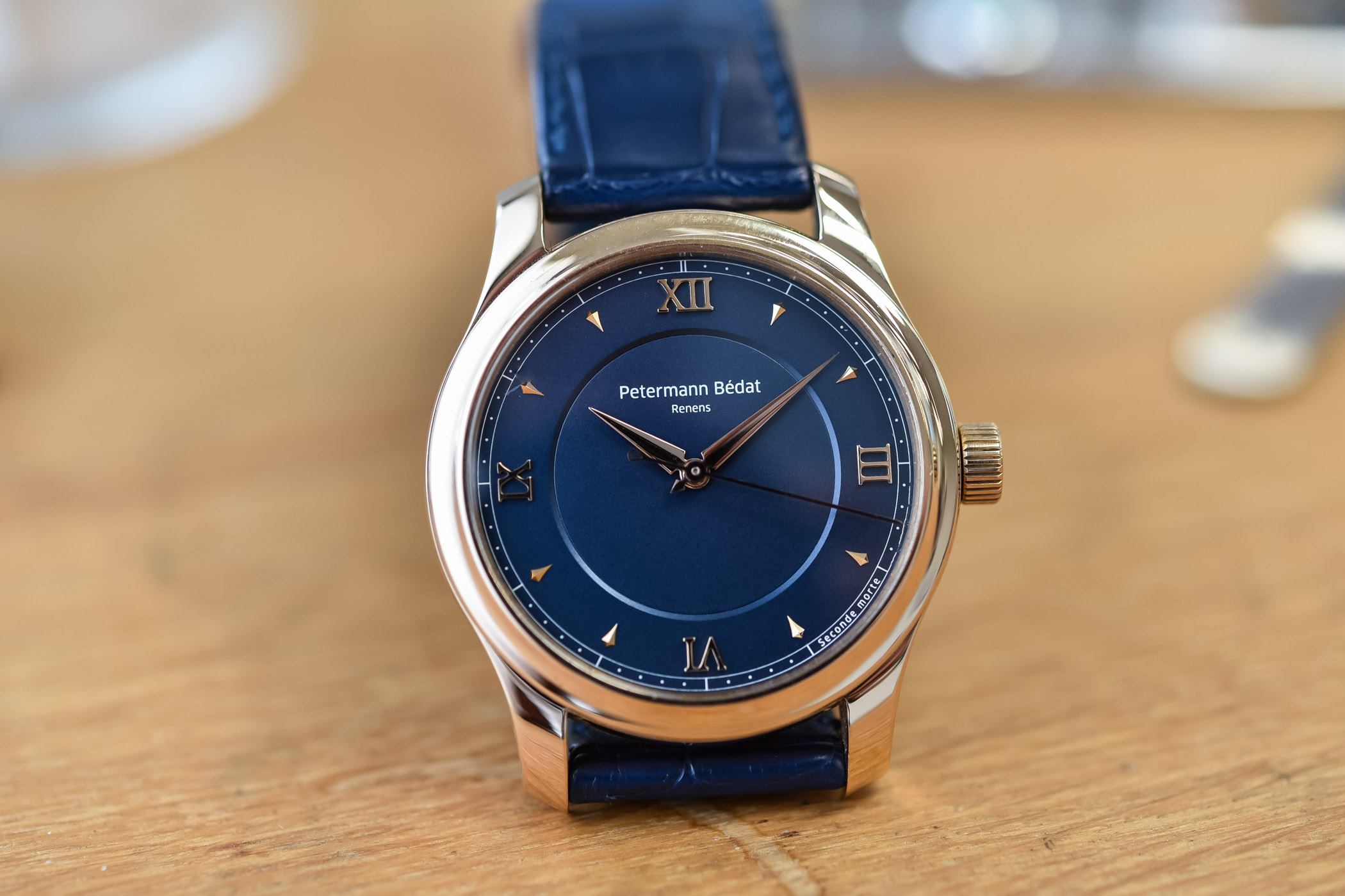



8 responses
What a nice movement…
Looks nice, hope this does well. Working with Renaud must’ve been fun.
Beautiful movement, case and great specifications. But the dial is so boring…
@danaos – give them a chance! It’s their first watch, and they are first and foremost watchmakers who focused on the movement… The design will come after.
Petermann and Bedat will present a more sophisticated dial at Baselworld. So stay tuned.
It’s the best way to make a watch, a “boring” dial so that you can tell the time easily and an exhibition back so that you can be captivated by the fascinating mechanism. Fabulous.
Looks like the mechanism is very close to a remontoir d’égalité, just it’s not put in the power train. I would expect a constant force design under the hefty price tag.
This is Valjoux 90/78 movement dressed up. This is in no way an in-house movement. It speaks volumes about the watchmaker’s character that they don’t mention that it is based on movement that you can get less than 500 USD.